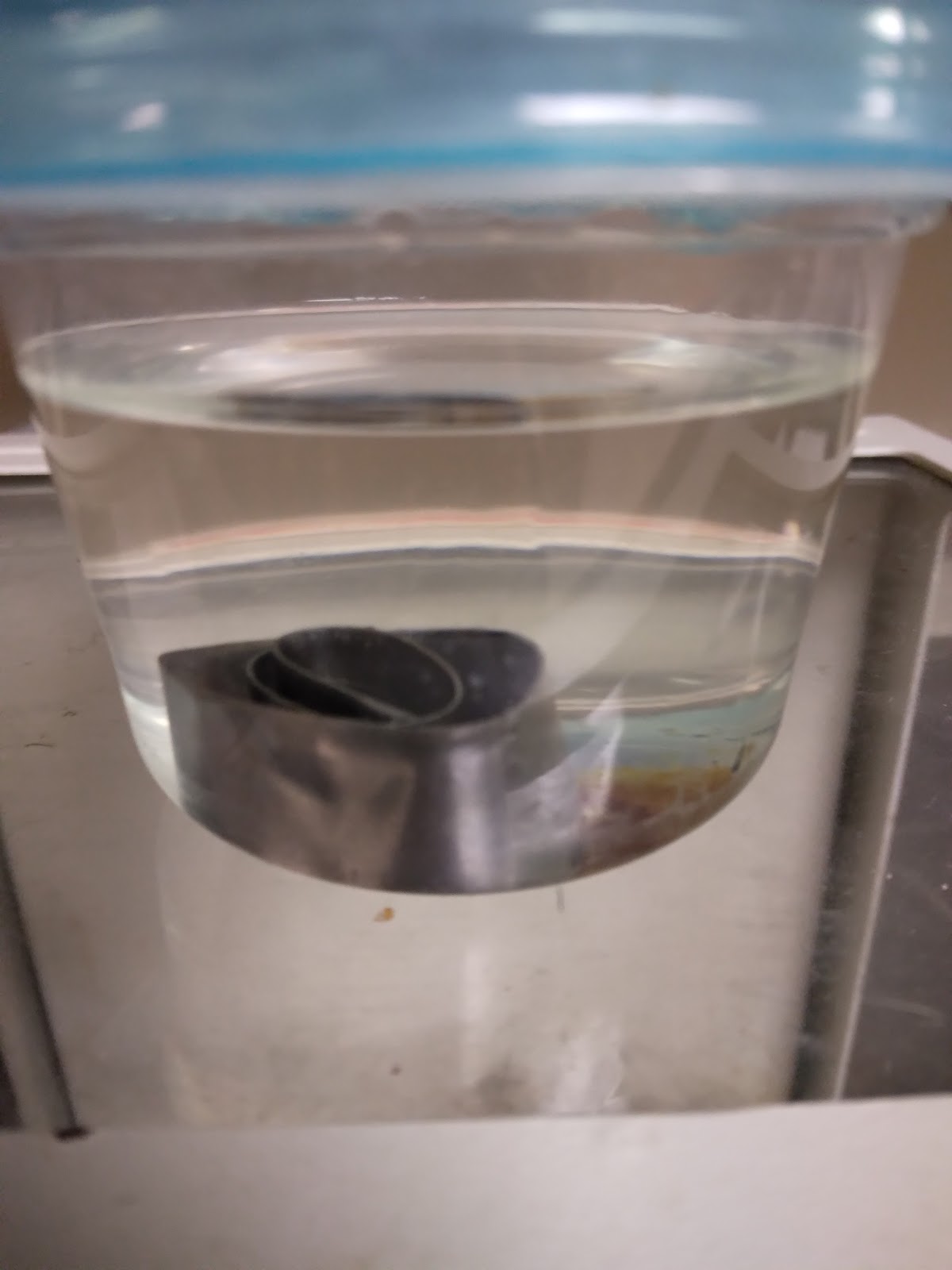Preparation of the PbO2 cathode for use in a lead acid bench-scale cell for experimental studies. The strip of lead metal is placed in commercial 10% bleach solution for 24-48 hours at 20 deg C. The oxidized lead electrode is removed, washed with distilled water and ready for use. For bench-scale demonstrations or experimental work, this is probably a good method vs. painting PbO2 ("red lead") ,with binder, on a lead surface.
Update: After 24 hrs, the electrode was removed, rinsed with distilled water and paired with a lead electrode. 35% aq. H2SO4 was used as electrolyte. Charging brought it to 2.2 V. Data will be collected and uploaded. The PbO2 cathode works! Bleach use allows avoidance of using PbO2 paste for bench-scale research of these cells. I am testing out a novel electrolyte.
Update: Indeed, the PbO4 electrode was functional with a lead anode in 35% H2SO4. Charing for 20 minutes provided a voltage over 2.2V. The two electrodes were in a plastic container with a plastic divider. The freshly-prepared electrolyte solution was still warm and deformed the plastic holder. More carefully-prepared such cells will be prepared and evaluated with some alternative electrolytes. All data will be uploaded here.
I will also be preparing so-called "ultra-batteries" with bound activated carbon on the anodes.
The Pb(IV) oxide electrode is the cathode in a lead-acid battery. During discharge, the cathode is where electrons are reduced, and Pb(IV) oxide is reduced to PbSO4. The half-cell reaction at the cathode is:
PbO2 + 3H+ + HSO4- + 2e- → PbSO4 + 2H2O
The other electrode in a lead-acid battery is the lead anode, where electrons are oxidized during discharge. The half-cell reaction at the anode is:
Pb + HSO4- → PbSO4 + H+ + 2e-
Overall, the chemical reaction for the discharge of a lead-acid battery is:
Pb + PbO2 + 2H2SO4 → 2PbSO4 + 2H2O
When the battery is charging, the reactions at the electrodes are reversed. The PbSO4 at the cathode is oxidized to PbO2, and the PbSO4 at the anode is reduced to Pb.




No comments:
Post a Comment
Note: Only a member of this blog may post a comment.